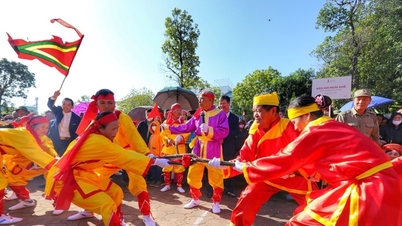Deliveries are expected between 2027 and 2032, ensuring the Indian Air Force has enough engines for its indigenously developed Tejas fleet.
The deal comes despite trade tensions between the two countries, with the US having previously imposed a 50% tariff on Indian goods. Experts say the deal demonstrates that the US-India defence relationship remains strong and stable, despite the trade disputes.
.png)
The new engine helps the Tejas Mk1A maintain its operational capability, while also contributing to replacing the MiG-21 fleet which is considered too old.
The Indian Air Force's fighter fleet currently stands at just 29 squadrons, lower than the planned 42, so engine supply is needed to boost its strength and ensure combat readiness.
The Tejas Mk1A is equipped with advanced AESA radar, modern electronic warfare systems and mid-air refueling capabilities, forming the basis for India's 4.5 generation fighter fleet.
The contract to purchase the US engines comes amid tensions between India and its neighbor Pakistan following a recent border conflict in which Indian aircraft engaged in combat with Pakistan's Chinese-made fighter squadron.
Chinese aircraft operated by Pakistan, such as the JF-17 and J-10C, are considered to have an advantage over the Tejas in terms of long missile range. The Tejas currently uses the Astra I missile with a range of 80-110 km, lower than the JF-17's PL-15 missile (200-300 km), but the Astra II and Astra III versions under development are expected to increase the range, helping the Tejas catch up or surpass its rival.
Experts said that the US engine contract would not only help strengthen the Indian Air Force but also strengthen strategic defense relations with the US, while supporting domestic aircraft production efforts and improving combat readiness.
Source: https://congluan.vn/an-do-trang-bi-dong-co-my-cho-tiem-kich-noi-dia-10317527.html



![[Photo] Prime Minister Pham Minh Chinh attends a conference to review one year of deploying forces to participate in protecting security and order at the grassroots level.](https://vphoto.vietnam.vn/thumb/1200x675/vietnam/resource/IMAGE/2025/11/12/1762957553775_dsc-2379-jpg.webp)



![[Photo] Highways passing through Dong Nai](https://vphoto.vietnam.vn/thumb/1200x675/vietnam/resource/IMAGE/2025/11/12/1762940149627_ndo_br_1-resize-5756-jpg.webp)
































































































![Dong Nai OCOP transition: [Article 3] Linking tourism with OCOP product consumption](https://vphoto.vietnam.vn/thumb/402x226/vietnam/resource/IMAGE/2025/11/10/1762739199309_1324-2740-7_n-162543_981.jpeg)







Comment (0)